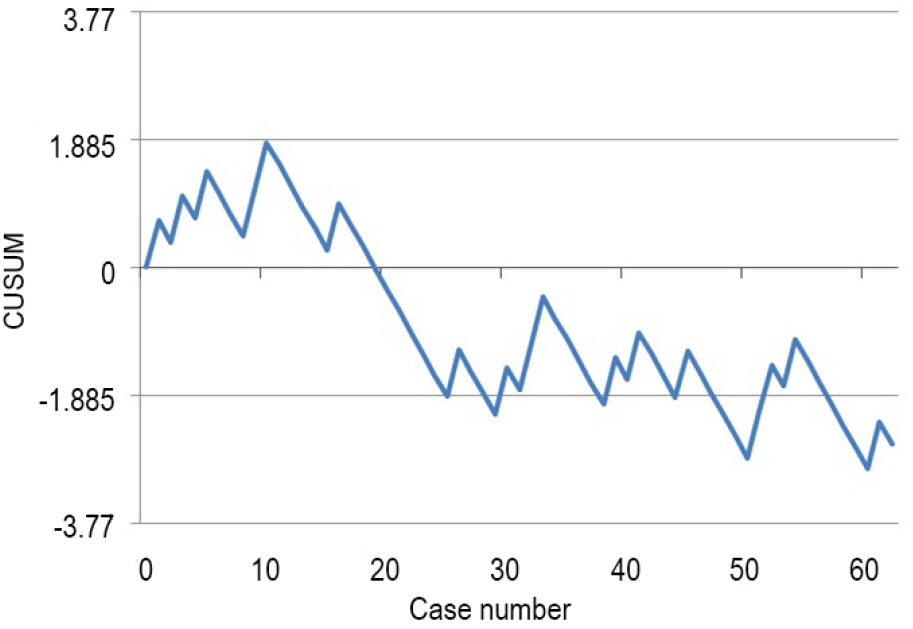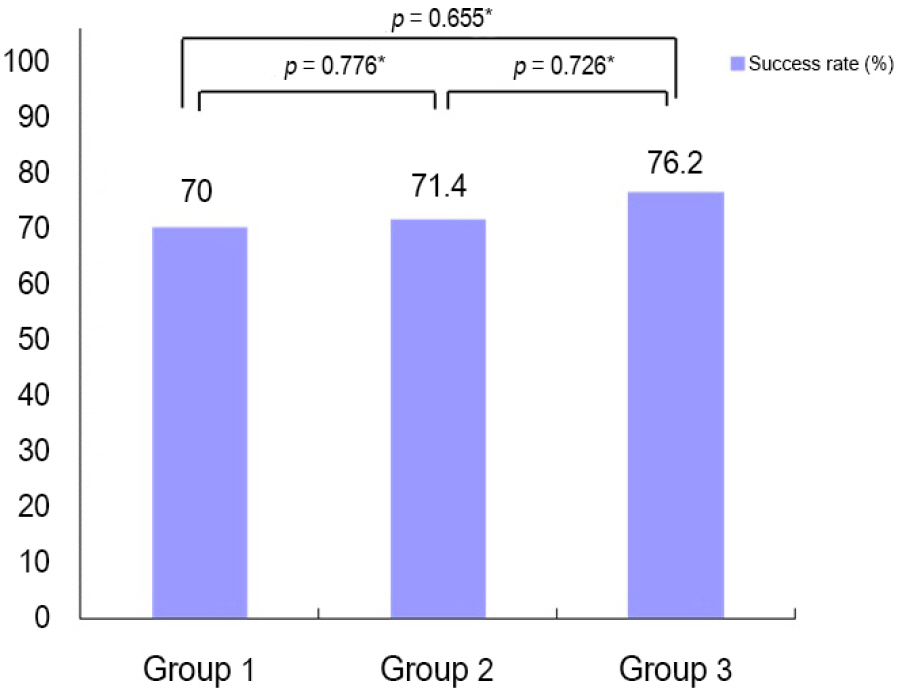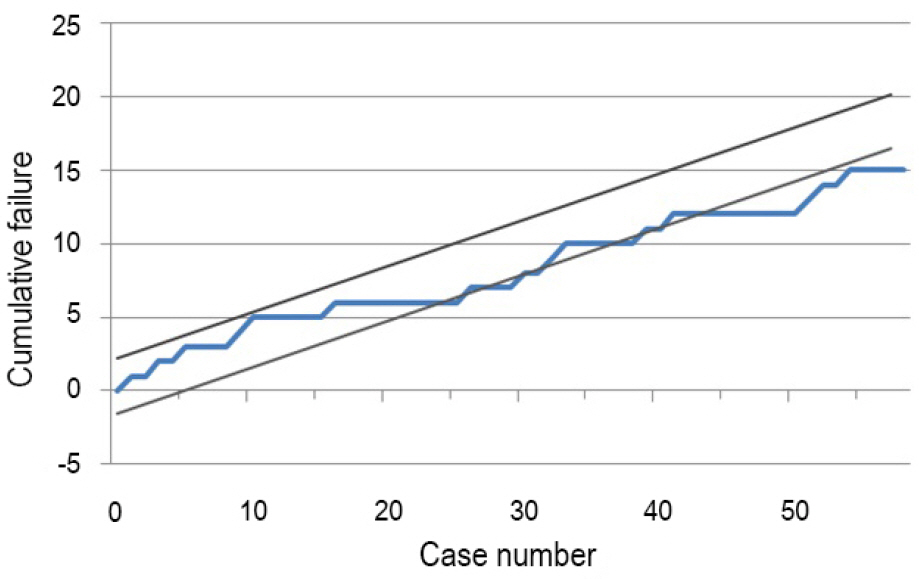J Korean Ophthalmol Soc.
2015 Jul;56(7):1111-1116. 10.3341/jkos.2015.56.7.1111.
Learning Curve for Strabismus Surgery
- Affiliations
-
- 1Department of Ophthalmology, Kangwon National University School of Medicine, Chuncheon, Korea. kimmoo-79@hanmail.net
- KMID: 2148813
- DOI: http://doi.org/10.3341/jkos.2015.56.7.1111
Abstract
- PURPOSE
In the present study, we evaluated the learning curve of strabismus surgery performed by a single surgeon.
METHODS
We reviewed the data of 62 patients with exodeviation who underwent strabismus surgery and were followed up for at least 3 months between March 2011 and November 2014. Patients were divided into 3 groups classified chronologically and the success rate in each group was investigated. Additionally, the results of exotropia surgery were analyzed using cumulative sum (CUSUM) analysis. We compared 5 m distal angle deviation preoperatively and 3 months after strabismus surgery.
RESULTS
The overall surgical success rate of 62 patients was 72.6% (45/62). Success rates were 70% (14/20) in the first group, 71.4% (15/21) in the second group and 76.2% (16/21) in the third group. CUSUM analysis indicated that a surgeon's performance begins to improve at attempt number 11 and cumulative failure chart suggested the surgeon had achieved acceptable level of performance after 44 surgeries.
CONCLUSIONS
A novice strabismus surgeon showed performance improvement after 11 cases and achieved acceptable level of performance after 44 strabismus surgeries. Although additional statistical data using more cases is needed, we suggest surgeons should perform at least 50 strabismus surgeries to ensure a high success rate.
Keyword
MeSH Terms
Figure
Reference
-
References
1. Remy C, Aracil P. History of strabismus surgery. J Fr Ophtalmol. 1984; 7:493–8.2. Parks MM, Mirchell PR. Concomittant exodeviations. Duane TD, Jaeger EA, editors. Clinical Ophthalmology. 1. Philadelphia: JB Lippincott;1999. p. 1–12.3. Kim HS, Suh YW, Kim SH, Cho YA. Consecutive esotropia in in-termittent exotropia patients with immediate postoperative over-correction more than 17 prism diopters. Korean J Ophthalmol. 2007; 21:155–8.4. Yap CH, Colson ME, Watters DA. Cumulative sum techniques for surgeons: a brief review. ANZ J Surg. 2007; 77:583–6.
Article5. Seo KY, Sohn YD, Ahn JY, et al. Evaluation of proficiency in chest compression by learning curve-cumulative sum analysis. J Korean Soc Emerg Med. 2010; 21:293–8.6. Mills MD, Coats DK, Donahue SP, et al. Strabismus surgery for adults: a report by the American Academy of Ophthalmology. Ophthalmology. 2004; 111:1255–62.7. Keech RV, Stewart SA. The surgical overcorrection of intermittent exophoria. J Pediatr Ophthalmol Strabismus. 1990; 27:218–20.8. Gu BY, Kim WJ, Son JH. Learning curve for endonasal dacryocystorhinostomy. J Korean Ophthalmol Soc. 2011; 52:519–23.
Article9. Martin KR, Burton RL. The phacoemulsification learning curve: per-operative complications in the first 3000 cases of an experi-enced surgeon. Eye (Lond). 2000; 14((Pt 2)):190–5.
Article10. Khan N, Abboudi H, Khan MS, et al. Measuring the surgical ‘learning curve’: methods, variables and competency. BJU Int. 2014; 113:504–8.
Article11. Baek SU, Lee JY. Long-term outcome of surgery for intermittent exotropia. J Korean Ophthalmol Soc. 2013; 54:1079–85.
Article
- Full Text Links
- Actions
-
Cited
- CITED
-
- Close
- Share
- Similar articles
-
- Effect of Vertical Transposition of the Horizontal Muscles on Vertical Strabismus Associated with Exotropia
- The Learning Curve for Laparoscopic Totally Extraperitoneal Herniorrhaphy by Logarithmic Function
- Can We Measure the Learning Curve of Colonoscopy Using Polyp Detection Rate?
- Reply: Factors Favorable to Reducing the Learning Curve of Laparoscopic Gastrectomy for Gastric Cancer
- The Learning Curve of the Beginner Surgeon with Supervisor for Laparoscopic Totally Extraperitoneal Repair




